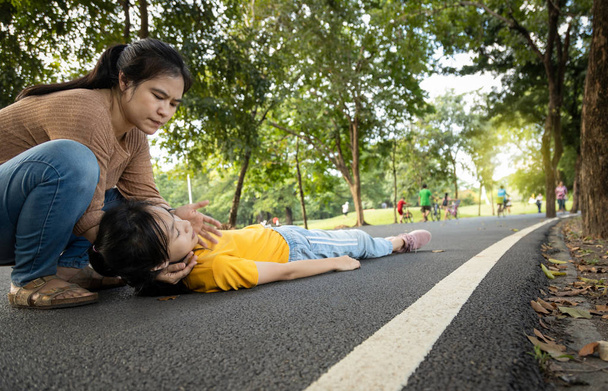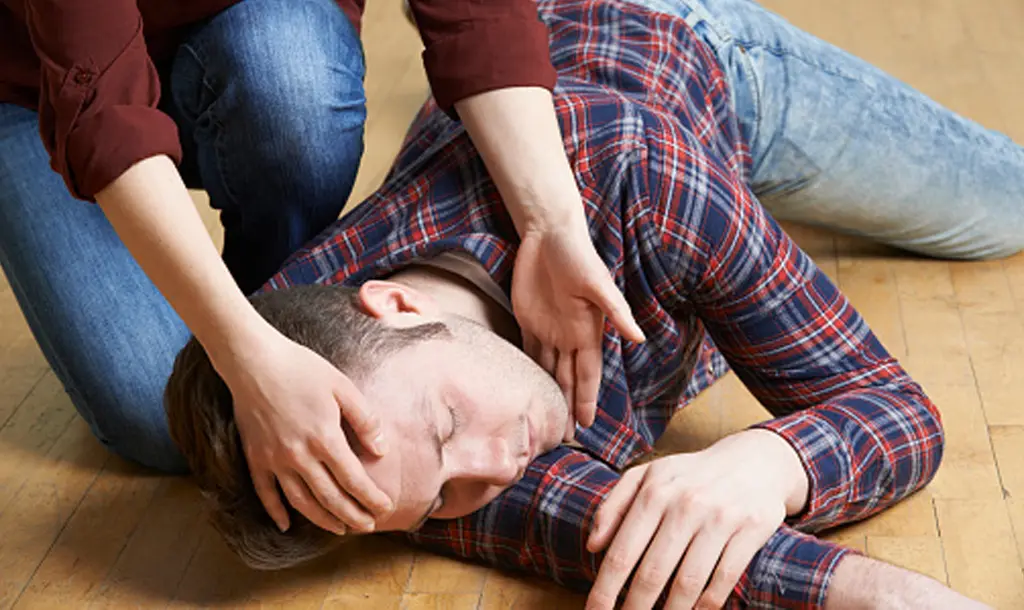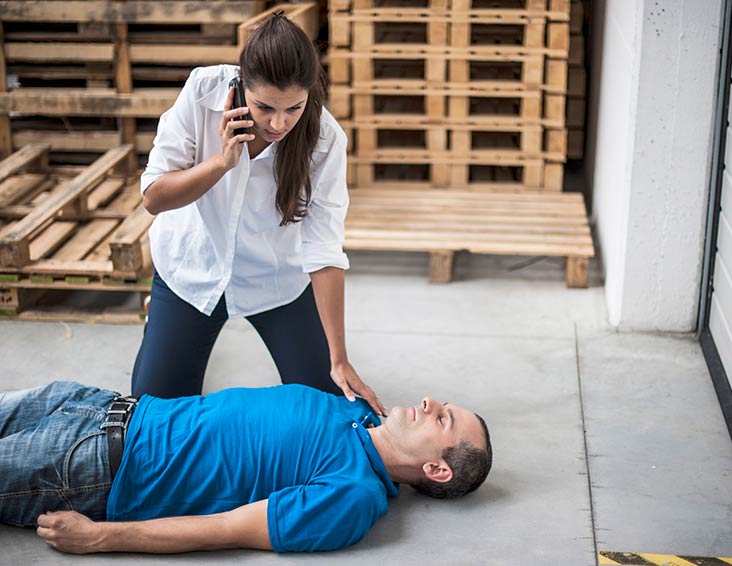Seizures are increasingly becoming common, and if any of your loved ones is suffering from this condition, it is essential for you to know how to help someone having a seizure and reduce the risk of the situation getting worse. In this article, we are going to discuss the same.
Here, you will get to know everything about seizures that will allow you to assist someone suffering from seizures. Keep reading.
What Exactly Is Seizure?
What's in this article...

In the most simple words, seizure basically refers to the sudden burst of electrical activities between the brain cells or neurons. This generally happens very quickly and is merely even noticeable.
However, when the case is severe, an individual may go unconscious and experience abnormal body movements. Seizure usually comes suddenly and lasts for around 30 seconds to 2 minutes. However, the exact timing can vary from person to person.
There are literally billions of cells in your brain, and their main job is to send and receive electrical and chemical signals to each other so that you can think, speak, and move properly. But, if something goes wrong and the cells can’t send signals properly, it ultimately leads to a seizure.
There are many things that can cause seizures in individuals. However, some of the most common causes include:
- Brain Tumors
- Head Injuries
- Cancer
- Too much or too low minerals in the blood
- High fever
- Hormone changes
- Brain Infections
- Narcotics like heroin and cocaine
- Some medications, like asthma drugs and antipsychotics
- High pressure during the pregnancy, which is known as Eclampsia
What Are Some Types Of Seizures?
Before we jump into the topic of how to help someone having a seizure, let’s learn about its different types. There are mainly two groups in which seizures are classified: Generalized seizures and Focal seizures.
Generalized Seizures
Generalized seizures tend to affect both sides of the brain. According to WebMD, here are some of the main subtypes that Generalized seizures have:
- Tonic-Clonic – This is known to be one of the most common subtypes of generalized seizures. It causes the arms and legs of an individual to become stiff and also hinder breathing. A person may also experience their limbs jerking around.
- Clonic – This seizure is considered to be very rare and most likely occurs in babies. It causes their body to make jerky movements on both sides at the same time.
- Atonic – This seizure is sometimes also called a drop attack, in which an individual loses all of their muscle strength. It can also lead you to harm yourself. Because if you are walking or going downstairs, you may fall and get injured.
- Myoclonic – Myoclonic is not considered to be that serious when compared to other subtype of generalized seizures. Because it doesn’t cause any serious reaction in the body, except jerky movements in one or more muscles.
- Tonic – Tonic seizure is likely to last for around 20 seconds and occurs in sleep. In this condition, the arms, body, and legs are likely to become stiff, making any movement become extremely hard.
- Febrile Seizures – These seizures are considered to be convulsions that occur in a child who has a high fever. It doesn’t cause harm and can last for a few minutes.
- Infantile Spasm – This seizure mainly occurs in children and causes their head to come forward and stiff their body suddenly. These seizures stop by the age of four.
- Absence seizures – This seizure usually lasts only for a few seconds, in which an individual loses his awareness for a short period of time. It occurs mainly in children and sometimes in adults too.
Focal Seizures:
Focal Seizures mainly affect only one part of the brain. Here are the main subtypes that focal seizures have:
- Complex focal seizures – These seizures can make anyone with epilepsy dazed or confused. Anyone experiencing complex focal seizures will find it extremely hard to answer even the simplest questions.
- Simple focal seizures – It will cause nothing more than twitching and may also affect your ability to taste and smell as this type of seizure affects only a minor part of the brain.
- Secondary generalized seizures – This type of seizure starts as a focal seizure and eventually turns into generalized seizure. That is mainly because it first impacts the one side of the brain and then spreads out to the both.
What Are Some Signs Of Seizure?
Anyone having Seizures is likely to experience numerous signs, which include the following:
- Breathing problems
- Jerking body movements of the body parts like arms and legs
- Changes in emotions or cognitive functions. This can include numerous things like fear, Deja Vu, and anxiety.
- Stiffness in the body
- Confusion
- Unresponsiveness
- And more…
How To Help Someone Having Seizure?

So, if you find someone near you having a seizure, there are a number of things that you can do for the betterment of the condition:
1. Ensure The Safety
A person having seizures will be less conscious and unaware of their surroundings. Hence, it is a must for you to ensure their safety. Help them move in a safe position. Also, make sure to stay with them afterward unless they are back to normal.
2. Turn The Person In The Sideline Position
This one is highly essential to do if you find anyone having a seizure. Firstly, you will need to lay them down and turn them in a side position. It will prevent the saliva from going back to the lungs, instead will fall to the side of your mouth. Not only that, but it will also prevent the tongue from obstructing the airways.
3. Loosen The Tight Clothes
Loosen the tight clothes around the neck, like a tie and collar, so that the person can breathe freely. Also, remove any objects like glasses to prevent any unnecessary injury.
4. Keep Your Cool
It is possible that you may get scared a bit if you have not seen anyone experiencing a seizure before. However, it is essential to remain calm and provide assurance to others that the situation will get normal soon.
5. Measure For How Long The Seizure Lasts
It is a must for you to measure how long the seizure lasts. In general, it will last for a few minutes, probably between one to five minutes. But, it goes longer than that, immediately call 911 and allow the experts to help the person having a seizure.
What Are Some Things That You Should Avoid?
So, now you know how to help someone having a seizure. But, there are also a few things that you must keep in mind whenever dealing with someone suffering from a seizure. Here are some of the main things that you should avoid:
- Avoid restraining or holding the person down.
- Avoid offering the suffering person any drink or food when unconscious. Do it only when they are fully awake.
- Lastly, never try to give CPR, even if you find that the person is not breathing properly. Because people generally begin to breathe again on their own after a seizure.
When Should You Call 911?

Well, there are some circumstances in which you should call 911, which includes the following:
- The person is already injured or sick.
- The person cannot breathe properly and also finds it challenging to walk after a seizure.
- The condition last for over five minutes
- The person is already suffering from health conditions like diabetes or any health-related problem.
- If the person is having a seizure for the first time, call 911.
- Also, if the person begins seizing again before even returning to the conscious state, call 911.
Conclusion
So, that was all you needed to know about how to help someone having a seizure. If you find any one near you having this health condition, use the instructions that we provided in this article to help them get better.
However, if your help doesn’t improve the condition and displays numerous severe signs like breathing problems, seizures lasting for more than 5 minutes, or any other sign that we mentioned above, call 911 as soon as possible.
Frequently Asked Questions (FAQs)
1. How Do You Stop a Seizure When You Feel It Coming On?
There are many things that you can do if you or anyone along with you feels the seizure coming on; for instance, move to a safe place, take the medication, loosen the tight clothes, sit or lie down. All of these things have the potential to reduce the risks that seizures bring along.
2. Can a Seizure Stop On Its Own?
Yes, according to the National Institutes Of Health (NIH), in most cases a seizure stops on its own as it lasts only for a few minutes.
3. Can Drinking Water Help Seizures?
Right now, it is unclear if drinking water can prevent seizures or not. However, some people confessed that they experience seizures more often when they are not properly hydrated, according to the Epilepsy Foundation.
4. What Helps Seizures Go Away?
There are many things that can be helpful in eliminating seizures. According to the NHS, here are some of the main things that help treat seizures in a person:
- Medications that are known as anti-epileptic drugs (AEDs)
- A special diet known as the Ketogenic Diet
- A surgery to remove the certain parts of the brain that are causing the seizures
- A procedure in which some electronic devices are placed in the body to stop seizures
Ansh Sharma is a content writer who possesses the skill of describing different topics in a simple and creative manner. He has a vast interest in crypto and finances, but is also well-versed with many other niches like pets, health, technology, gaming, etc. Apart from writing, he loves to read non-fiction books to continually learn and grow.





